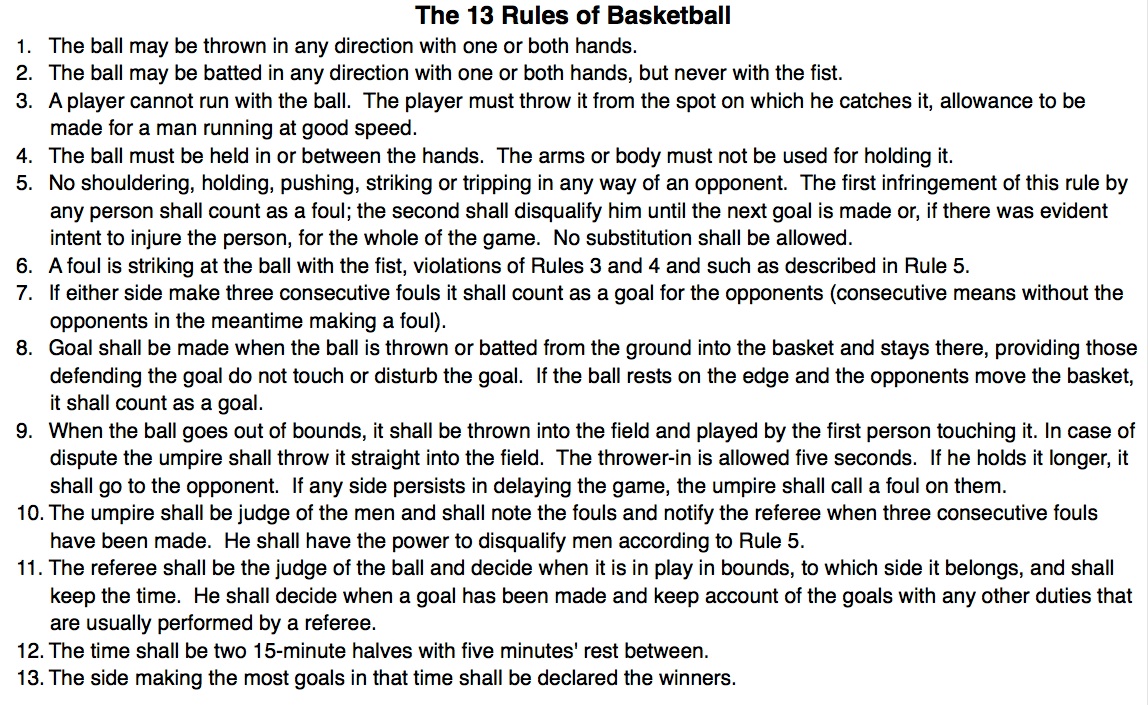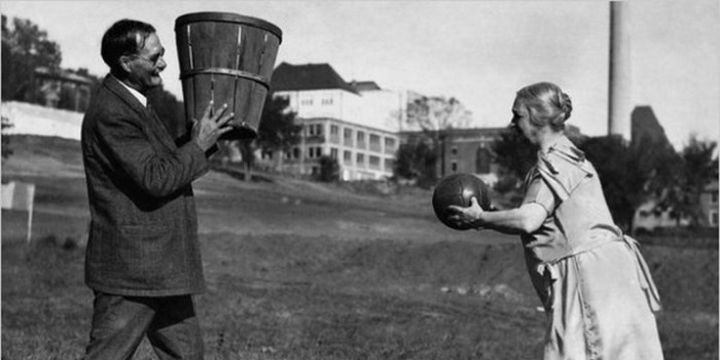 The Beginning of Basketball
The Beginning of Basketball
Dr. James Naismith's role as the inventor of the sport of basketball and his use of peach baskets has been known since the first game was played in 1891. However, the full details of that first game were not known until Hellen Carpenter found her grandfather's detailed notes about the game in her basement in 2006.
Beginnings
Naismith was a physical education teacher at the International YMCA Training School in Springfield, Massachusetts. During a sports conference at the school in 1890, athletic directors from all over the United States asked him to invent a sport. They were looking for an indoor sport to solve the problem of sparse attendance in winter gym classes. The notes that Carpenter found show that Naismith's idea for basketball came from a childhood game called Duck on a Rock. As a child, Naismith had already figured out that it was easier to hit something with a thrown object by softly lofting the object rather than throwing the object hard.
The Baskets
Naismith decided to place the targets about 10 feet above the basketball court because he believed the sport would be less rough if players weren't fighting for the ball on the ground as they did in soccer. The concept of basketball as a no-contact sport were a part of the game from its inception. This is roughly the same height of todayŐs baskets. Using a soccer ball as the ball that would be thrown into the target, Naismith looked for a target that would be "small enough so that a goal could not be made at every attempt," he wrote in his notebook. He then recalled that he had two peach baskets that were about the correct size for a soccer ball. Hence the name of the sport, Basket-Ball
The Game
Naismith's notes do not say how big the basketball court was, but the two peach baskets were placed at the opposite end of the gym floor at the YMCA Training School, which became Springfield College in the 1900s. He gathered students, and divided them into two teams of an equal number of players. Several students broke his rules by tackling players who had the ball. He also wrote that he added a backboard behind the peach baskets because students would stand in the gym's balcony and knock the other team's shots away from the basket. To keep the game simple, his new game only had 13 rules (see below). Interestingly, players were not allowed to dribble when the game was first introduced. Also, following a goal, the ball was stuck in the peach baskets 10 feet above the ground and could only be retrieved using a long stick. Later the bottom was removed from the basket so the ball would merely fall through.

 The Reception of the New Basketball Sport
The Reception of the New Basketball Sport
Naismith was concerned about the popularity of his new game, but it caught on quickly. His 13 rules were printed in the SchoolŐs newspaper in 1892 and were soon seen by people throughout the United States. Amazingly, by 1900, several Eastern colleges had teams.
Interestingly, the basketballŐs design was even patented in 1929 (Patent 1,718,305 by George Pierce). The patent drawing is shown here. It is not terribly different than today's basketball pattern.
The Rest of the Story
In addition to the creation of the basketball, James Naismith graduated as a medical doctor. He was primarily interested in sports physiology and what we would today call sports science. He was also a Presbyterian minister, with a keen interest in philosophy and clean living. Naismith watched his sport, basketball, introduced in many nations by the YMCA movement as early as 1893. Basketball was introduced at the Berlin Olympics in 1936. Naismith was flown to Berlin to watch the games. He died in Lawrence, Kansas, in 1939.
In the photo below, Dr. James Naismith and his wife are shown experimenting with a
bushel basket, similar to the peach baskets, that he eventually decided to use as
a goal for the game. And thus, the name basketball! Today basketball
has grown to become one of the world's most popular sports.
